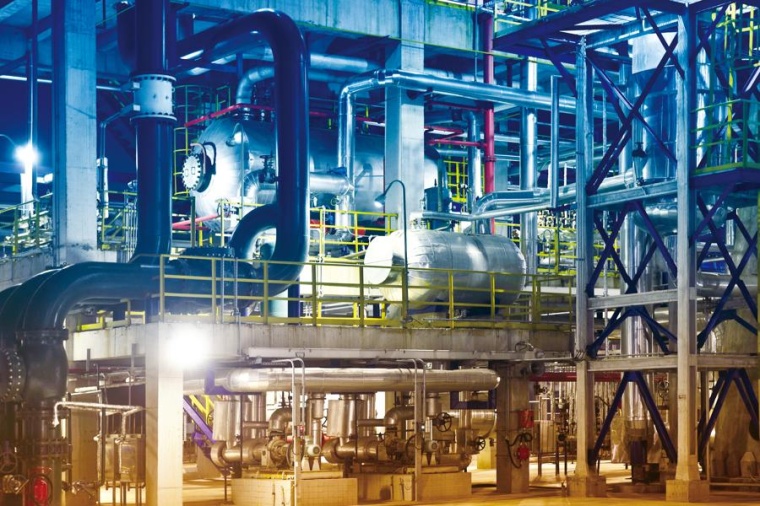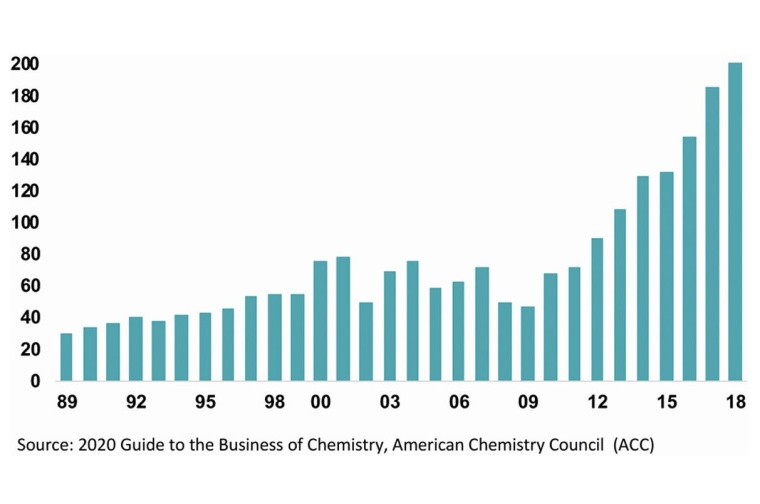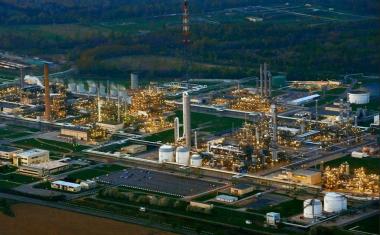Trade, Innovation and Investment
US chemistry remains in demand around the world despite ongoing trade tensions and Covid-19. In 2019, the US chemical industry was one of the world’s largest exporters, at $136 billion. The industry has a large and growing trade surplus, reaching more than $35 billion in 2019.

A world leader with $565 billion in shipments, the United States accounts for 14% of global chemical shipments and is the second largest chemical producing nation after China. The chemical industry is also a large exporting sector in the US, accounting for around ten cents out of every dollar of US exports. In addition to the industry’s contributions to the global economy, innovations in chemistry have created countless economic and societal benefits: longer and healthier lives through medical advancements; improved standards of living from fertilizers and water treatment; and instant access to information from anywhere, thanks to smartphones and other smart devices, to name a few. Thanks to chemistry, groundbreaking products are improving the world all around us by making it healthier, safer, more sustainable and more productive.
At present, the world continues to cope with a global pandemic that has disrupted supply chains and affected the lives and livelihoods of billions of consumers while claiming a large and growing human toll. While there is increased demand for chemical products that serve as essential inputs to many products used in response to Covid-19 (hand sanitizers, disinfectants, face masks and other personal protective equipment and more), many other key end-use markets and export customers have experienced a sharp decline in demand over the past year.
Amidst near-term uncertainty, the products of the US chemical industry remain in demand around the world. The competitive advantage enabled by domestic shale gas development has resulted in more than $200 billion in announced investment in US chemical manufacturing capacity over the past decade. Along with ongoing investment in innovation, the US chemical industry is poised to remain a global hub for production in the years ahead.
US Trade
US chemistry remains in demand around the world despite ongoing trade tensions and Covid-19. In 2019, the US chemical industry was one of the world’s largest exporters, at $136 billion. The industry has a large and growing trade surplus, reaching more than $35 billion in 2019. Trade is essential to the success of the US chemical industry, and it benefits the broader economy as well. Today, the chemical manufacturing sector is one of America’s top exporting industries, accounting for around 10% of all US exports.
US trade in chemicals (both imports and exports) has grown steadily over the years but, on balance, the US chemical industry has maintained a net exporter position. Due to access to abundant and affordable shale gas, US chemical manufacturers benefit from comparatively lower production costs. Some of the segments that benefit the most from the shale gas revolution, such as petrochemicals, intermediates and plastic resins, account for the majority of chemicals trade and the increased competitiveness of the industry could lead to a growing trade surplus, particularly in these segments.
A significant portion of US trade is within North America: Canada, the largest single national market for US chemical exports, and Mexico, the second-largest, together consistently account for around one-third of US chemical exports (nearly $43 billion in 2019). In addition to regional proximity, more than 70% of US materials imports, and almost half of US chemical exports, are intra-company, meaning one company exchanges materials with its overseas affiliate.
Nearly one-fourth of US chemical production is exported. Outside North America, the largest markets for US chemistry exports are China, Brazil, Japan, and South Korea. While imports account for a slightly lower percentage of domestic consumption, more than half of US chemical imports are essential inputs used for domestic chemical production. Canada is the largest source of chemical imports to the US, most of which are plastic resins and commodity chemicals. After Canada, the top countries for US chemical imports are China, Germany, Japan and Ireland.
US chemicals trade has been greatly impacted by Covid-19, as well as by steep tariffs on US-Chinese chemicals trade and increased trade policy uncertainty. Both imports and exports of chemicals have declined in 2020, although the US has maintained its net exporter position.
Innovation & Investment
A key driver of competitiveness and economic growth, innovation is at the core of value-added products and services, more efficient production processes, and improved business models. Innovation is found in all aspects of the chemical industry, from research and development (R&D) to business processes to customer relationships and knowledge. The US chemical industry is consistently one of the largest private-sector industry investors in R&D. Even times of lower profit margins and economic uncertainty, chemical companies generally maintain their R&D activity: the US chemical industry has invested more than $10 billion, on an annual basis, in R&D spending for over a decade.
Successful innovation in the business of chemistry requires intensive effort and major expenditures and it can take years from the time a project is conceived to the time a chemical product is brought to the marketplace. A 2013 McKinsey & Company study (“Chemical innovation: An investment for the ages”) found that it takes from two to 19 years for a chemical product to reach the market.
Capital investment (the investment in structures and equipment) is also essential to the continued competitiveness of the US chemical industry. Over the past decade, annual capital investment in US chemicals has more than doubled, reaching $35 billion in 2019. A key factor for the increased investment has been the competitive advantage enabled by shale gas development. With more than $200 billion in announced investment since 2010, investors from around the world recognize the advantage of building chemical capacity in the US. Indeed, 69% of these investments are foreign-direct investment or include a foreign partner.
Innovation is a long-term driver of future financial performance and value creation. It provides business opportunities, as well as the sustainable foundation for continued growth. Innovation can lead to shifts in relative cost relationships, and provide sustained competitive advantages. Indeed, it is at the heart of the business of chemistry, and is crucial to economic growth and improvement in the quality of life.
Author: Heather Rose-Glowacki, Director, Chemical & Industry Dynamics, American Chemistry Council, Washington, DC, USA
Thist text is based on — and includes excerpts from — the American Chemistry Council’s publication “2020 Guide to the Business of Chemistry”. The report is available via bit.ly/2020-ACC.
_________________________________
Guide to the Business of Chemistry
The “Guide to the Business of Chemistry”, published regularly by the American Chemistry Council (ACC), is an important source of data on the US chemical industry. The publication characterizes the chemical business in ways that are familiar to the industry, as well as its observers. Since 2018, ACC has been publishing most of its data on a chemicals (excluding pharmaceuticals) basis. It made this change in order to align its statistics with those of its global partners and the business community who view chemicals and pharmaceuticals as separate industries. The pharmaceutical industry remains a key end-use market for chemical ingredients.



most read


Dow to Shut Down Three Upstream European Assets
Building on the April 2025 announcement, Dow will take actions across its three operating segments to support European profitability, resulting in the closure of sites in Germany and the UK.

BASF Sells Majority Stake in Coatings Business
BASF sells a majority stake in its coatings business to the investor Carlyle.

Merck Acquires Chromatography Business from JSR Life Sciences
Merck to acquire the chromatography business of JSR Life Sciences, a leading provider of CDMO services, preclinical and translational clinical research, and bioprocessing solutions.

Ratcliffe: Chemical Industry in Europe at a Tipping Point
Ineos CEO Ineos calls on European politicians to save the chemical industry.












